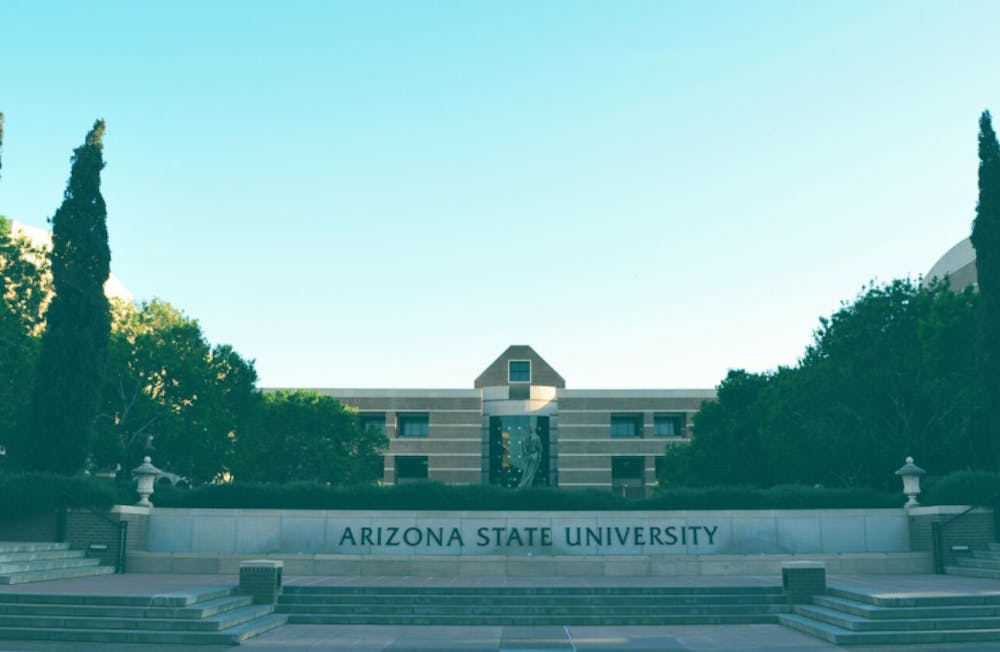Each night she was in the ASU undergraduate student government office her sophomore year, Ephraim Infante would watch out the window expectantly, waiting for the same man eating a Cup-O-Noodles to walk by.
She found out the older man was a student at Arizona State University. He was taking night classes because that was the only time available to him. Infante, now the Senate President of Undergraduate Student Government on the West Campus, was bothered by the idea that the cheap food the man carried with him might be the only thing he could afford.
“He told me all he had to eat was Cup-O-Noodles, and that was just not right, you feel?” Infante says, as she sits in the lobby of the USGW office she used to see him from.
It was that man who inspired Infante to take action.
In fall 2016, USGW opened up a food voucher program for students experiencing food insecurity. The program became the first student government organization on all ASU campuses to develop a solution for this problem.
Student food insecurity, the inability to pay for food, isn’t a problem unique to ASU. In fact, the number of college campuses creating their own programs to combat food insecurity has grown rapidly in the last several years, a Washington Post article states.
Food banks on university campuses went from four in 2008 to 121 in five years, according to the food bank at Michigan State University, one of the first colleges to create a system to combat food insecurity, according to the Post article.
The West Campus Solution
USGW is making an attempt to strike out college food insecurity — and they’re doing it in a unique way.
“The way we’re combating food insecurity is pretty different than you’d think,” Infante says. “You would think we’d do food drives, but we’re not doing that.”
In fall 2015, Infante took the issue to the University Affairs Committee, which she chaired, to brainstorm possible solutions.
The original idea was to take all of the extra meals left over each week from meal plans and pool them into a bank that students experiencing food insecurity would be able to dip into when they needed it, Infante says. After discovering it would be a logistical nightmare to convert all of the unused meals into a dollar amount and redistribute them, the team began to simplify its plan, she says.
Instead of actual meals, the USGW's program was allocated $10,000 by University Housing to distribute to students as it sees fit, whether that be through M&G or meal swipes, Infante says.
If a student wants to use the program, they are directed to go get their voucher — typically for one or two meals — and discuss a long-term solution with a program representative that’s unique to them, Infante says.
“When a student goes to the Dean’s office, it opens the door for them to get connected with other resources,” she says. “For example, if a student is struggling with homelessness, the dean’s office will make sure you’re not only fed, … but that you’re also connected with housing.”
The program is also discrete to keep those in vulnerable situations protected and not attract those who might use the program as a “freebie,” Infante says.
“We can’t send mass emails because of the sensitivity of the topic, but we are promoting it in (campus) organizations,” she says.
In the first two months of the program, seven people obtained vouchers, says Linda Torres, the director of the program. Torres works directly with the students that come in to the dean’s office to talk about their options outside the program.
Of the students she has talked to, Torres says some students have needed to look into employment, others ran out of money for the week and just needed money to get by for a few days, and one student had just moved to the area and was “still trying to figure out his way.”
A Temporary Fix
A common misconception of the program is that it is a permanent solution, Torres says. While the program will help people with varying degrees of food insecurity, the program is not meant to be used more than once or twice, she says.
“It’s only a temporary fix for students who need a temporary fix,” Torres says. “For students who need something more long-term, we look into that.”
The program caters itself to students like Sarah Jennings, a senior at the West Campus, who says she would be interested in learning more about the program for when she gets tight on cash before her next paycheck.
In addition to pursuing her degree in biology at West, Jennings works in a lab on the Downtown Phoenix Campus a few days each week.
“I mean, it’s good pay,” she says. “But with going to school full time, you can’t work every day.”
The weeks Jennings is short on cash, she says she makes lunch or tries to buy the cheapest things possible, sometimes even skipping a meal if she has to.
“If I eat breakfast, I don’t have money then, so I have to wait until I go home,” she says.
A Growing Hunger
A 2015 study conducted by Arizona State University and the University of Minnesota found that approximately one-in-three college freshmen experience food insecurity.
The study found that 32 percent of college freshmen surveyed reported experiencing food insecurity in the past month, and 37 percent reported experiencing food insecurity in the past three months.
But, college campus-based programs are making an impact.
Public Policy Manager for The Association of Arizona Food Banks Oscar De Los Santos says that before campus-based solutions, students had limited options.
“If you’re facing food insecurity, a lot of food pantries are few and far between, and students have difficulty accessing them due to lack of transportation,” he says.
To De Los Santos, lack of access to food banks and stigmas attached to them are the reasons student food insecurity can go unsolved.
The benefit of having a program to combat food insecurity on campus is being able to “literally walk a few steps on campus and find access to food. The probability that you’re going to get food jumps up dramatically,” De Los Santos says.
Other Arizona Solutions
“I’ve seen that a number of campuses across the state are opening up food pantries on campus,” De Los Santos says.
One of those programs is the Campus Pantry at the University of Arizona that has been around for several years. It began in 2012 as a students-helping-students movement, and in a span of just two years, it grew into a certified 501(c)3 nonprofit organization, with a permanent location on the UA campus.
“It’s all gone fairly seamlessly,” Berkley Harris, director of the UA Campus Pantry says, in reference to the organization’s growth.
Harris says she was part of the original group of students that started the program out of a closet on campus, when it only distributed nonperishable items to students in need. This is an obvious contrast to the Campus Pantry today that serves about 1,000 pounds of perishable and nonperishable food to roughly 100 students each Friday the pantry is open, she says.
The success of the UA Campus Pantry has attracted the attention of many in the Arizona community, including a certain rival school in Tempe.
Harris says this summer she was asked to come talk to a coalition composed of faith-based organizations and members of United Food Bank in Mesa, which also serves Tempe, to talk about the success of the UA pantry.
“There’s definitely been talks about starting something in Tempe,” she says. “They’re trying to figure out the right model (asking questions) like ‘how do we actually start this?'”
Although Harris loves the advising aspect of the voucher system USGW has started, she says the temporary nature of the program might not always be the best solution.
“Almost all of our students have jobs,” she says. “They all are doing everything they can, really, and sometimes that’s just not enough; they’re still struggling to get food.”




